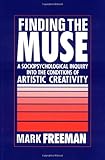Finding the muse : a sociopsychological inquiry into the conditions of artistic creativity / Mark Freeman.
Material type: TextReference number:ocm27814496Publication details: Cambridge [England] ; New York : Cambridge University Press, 1993. Description: viii, 330 p. ; 24 cmISBN: 0521392187 (hardback)Subject(s): Artists -- United States -- Psychology | Creation (Literary, artistic, etc.) | Art and society -- United States | Visual arts | United StatesDDC classification: 709/.73/09046 LOC classification: N71 | .F655 1993
TextReference number:ocm27814496Publication details: Cambridge [England] ; New York : Cambridge University Press, 1993. Description: viii, 330 p. ; 24 cmISBN: 0521392187 (hardback)Subject(s): Artists -- United States -- Psychology | Creation (Literary, artistic, etc.) | Art and society -- United States | Visual arts | United StatesDDC classification: 709/.73/09046 LOC classification: N71 | .F655 1993| Item type | Current library | Class number | Copy number | Status | Date due | Barcode | Item reservations | |
|---|---|---|---|---|---|---|---|---|
 Book
Book
|
Main Library General Shelves | 709.7309046 F88F (Browse shelf(Opens below)) | 1 | Available | 052722022 |
Includes bibliographical references (p. 315-321) and index.
Ch. 1. Social Reality and the Space of Creativity -- Ch. 2. To Be an Artist -- Ch. 3. In the Company of Others -- Ch. 4. Creativity and the Market -- Ch. 5. The Dream of Artistic Freedom -- Ch. 6. The Conditions of Creativity -- Appendix: The Artists Project.
Finding the Muse explores the lives of a group of aspiring artists from the mid-1960s, when they completed art school, to the mid-1980s, focusing especially on problems of artistic creativity as they relate to such issues as the mystique of the artist, the challenge of establishing community among artists, the place of the art market in the construction of artistic identity, and the limits and possibilities of modern and postmodern art itself. The present exploration is a timely one; for despite the wealth of information suggesting that recent decades have brought an unparalleled measure of freedom for artists owing to the increasingly pluralistic climate within which they have lived and worked, it is suggested here that this climate has been decidedly less conducive to creativity than is often assumed. By identifying salient problems of contemporary artistic creativity, Mark Freeman seeks both to reconstruct more optimal conditions of creativity and to provide direction for how these conditions might be achieved. In addition to having particular usefulness for psychologists of art and sociologists of American culture, Finding the Muse will be of interest to aspiring artists, philosophers, art historians, and art educators.
1
There are no comments on this title.
